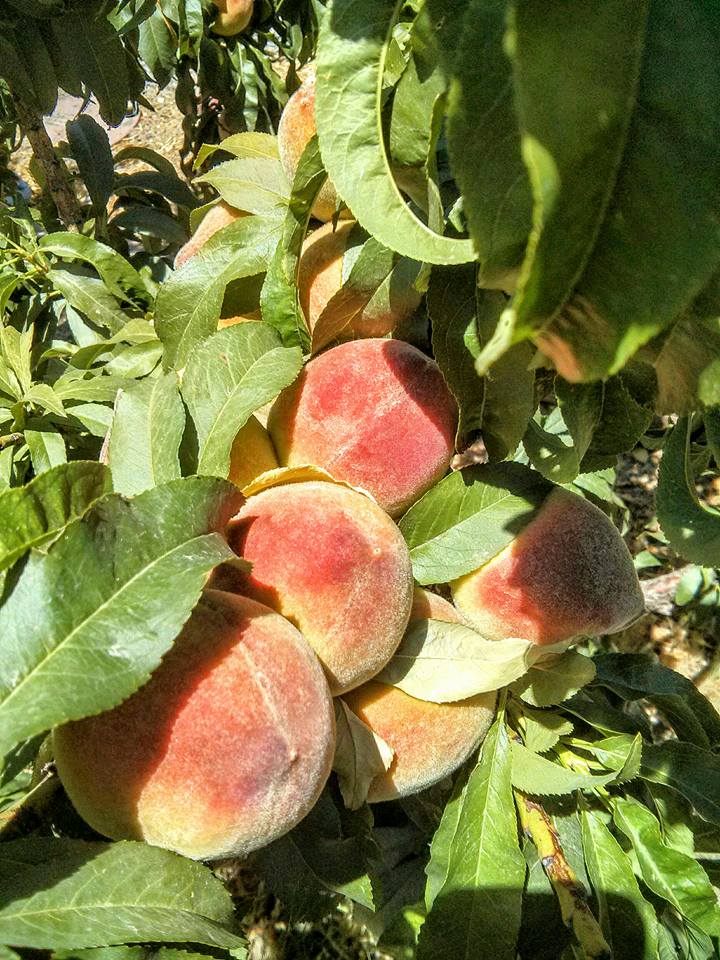by Jennifer Medina–Salter, El Paso Master Gardener

Credit: Peaches on the Tree Before Thinning by Bev Clark, El Paso Master Gardener
Nothing is sweeter than the taste of your very own fruit, grown and picked in your own back yard. Growing fruit trees in El Paso is not easy, but with some careful planning and work, you can reap the benefits. Here are some basics, and much more information is available at the Related Articles links, below.
First, choose where you are going to plant your tree. Fruit trees need abundant sun to flower and set fruit, so choose your location carefully. Fruit trees come in three sizes: dwarf, semi-dwarf and full sized, so you have options for the available space. Look for healthy looking specimens. Unless your selection self-pollinates, plan on planting more than one tree so they will have ample opportunity to cross pollinate. Late winter, when temperatures are cool and roots are dormant, is a good time to plant trees. Planting during the hotter months will make it difficult for the trees to become established and thrive. It may be necessary to properly stake young trees to protect them against our high spring winds.
Once planted, water your tree deeply and continue to do so as the weather becomes hotter. Once your trees are established, remember that the tree root system extends out at least to the edges of the canopy, so make sure your irrigation lines run out to just beyond the canopy of branches. Mulching around your fruit trees will help retain moisture. Apply mulch beyond the trunk of the tree and out to the drip line just as you do with your water system. Do not build up the mulch around the base of the tree. Regular yearly pruning of fruit trees is essential to developing strong, healthy specimens. Suckers sprouting around the base take nutrients from the main tree. Remove them as soon as they are seen. Detailed information about how and when to prune your tree can be found at Training and Pruning Deciduous Fruit Trees.
Once your tree begins to develop fruit, thin out to encourage development of bigger fruit. For peaches and nectarines, thin to 4 to 6 inches apart. Thin apples and pears to 1 to 2 fruit per cluster. For plums and apricots, thin to 2 to 3 inches apart, and thin persimmons to 1 fruit per shoot. Most other fruit do not need thinning. If you have kept your tree at a manageable height with pruning, you can place a net over it to protect the fruit from birds and animals. After you’ve done what you can to ensure a healthy, abundant harvest, leave the rest to Mother Nature.